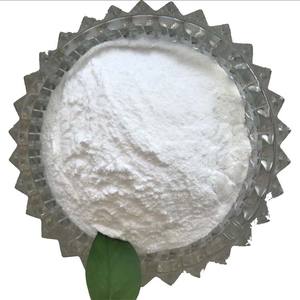Introduction to Water Lowering Representatives: A Game-Changer in Concrete Technology
Water decreasing representatives (WRAs), also known as plasticizers, are essential chemical admixtures used in contemporary concrete formulation to improve workability while decreasing water content. By spreading cement fragments better, these agents allow the manufacturing of high-performance concrete with improved mechanical properties, resilience, and sustainability. As building demands evolve– needing more powerful, longer-lasting, and environmentally friendly materials– water decreasing representatives have actually become main to development in civil engineering and framework growth.
(Cabr superliasticizer)
Chemistry and Category of Water Reducing Professionals
Water reducing agents feature by adsorbing onto the surface area of cement fragments, creating electrostatic repulsion that stops jumble and enhances flowability. They are mostly classified right into three generations based upon their chemical structure and performance degree: lignosulfonates (first generation), sulfonated melamine formaldehyde (SMF) and naphthalene sulfonate formaldehyde condensates (NSF) (2nd generation), and polycarboxylate ether (PCE)-based superplasticizers (third generation). Each class supplies distinct advantages in regards to dose performance, depression retention, and compatibility with different concrete types, making them suitable for various construction situations.
Mechanism of Action: Just How Water Lowering Representatives Boost Concrete Efficiency
The key function of a water minimizing agent is to reduce the water-to-cement (w/c) ratio without endangering workability. This decrease results in greater compressive toughness, reduced porosity, and boosted resistance to environmental tensions such as freeze-thaw cycles and chemical attack. WRAs attain this by customizing the rheological behavior of the cement paste, allowing for better compaction and denser microstructures. Advanced solutions, especially PCE-based ones, can be tailored at the molecular level to enhance dispersion and hydration kinetics, additionally improving early-age and long-lasting concrete residential or commercial properties.
Industrial Applications Across Building Sectors
Water reducing representatives are indispensable throughout a vast array of building applications. In high-rise buildings and bridges, they enable making use of self-compacting concrete (SCC), which moves quickly right into intricate forms without resonance. In precast and prestressed concrete aspects, WRAs contribute to faster demolding and increased manufacturing prices. Facilities projects such as passages, dams, and highways benefit from their capability to improve resilience under severe conditions. Also in environment-friendly structure efforts, WRAs sustain the growth of low-carbon concretes by assisting in the unification of supplementary cementitious products like fly ash and slag.
Market Patterns and Technological Advancements
The international market for water decreasing agents is growing rapidly, driven by urbanization, framework financial investments, and the demand for sustainable construction solutions. Technical developments have actually brought about the growth of crossbreed and multifunctional WRAs that integrate water reduction with retardation, air entrainment, or thickness alteration. Digital tools such as AI-driven admixture optimization and real-time surveillance systems are being incorporated right into concrete manufacturing to ensure precise application and consistent top quality. Furthermore, makers are concentrating on enhancing product stability, reducing sensitivity to varying concrete chemistries, and lessening environmental impact through greener synthesis courses.
Difficulties and Environmental Factors To Consider
Despite their benefits, water minimizing agents encounter difficulties related to cost, compatibility, and ecological impact. Some standard WRAs might consist of dangerous byproducts or call for energy-intensive manufacturing methods. Problems such as slump loss over time, sensitivity to temperature variations, and communications with other admixtures complicate their usage in field problems. From an environmental viewpoint, there is increasing pressure to establish biodegradable and non-toxic alternatives. Scientists are discovering bio-based plasticizers originated from renewable energies, aiming to lower reliance on petrochemical feedstocks and line up with circular economic situation concepts.
Future Prospects: Technology and Sustainability in Admixture Growth
( concrete addtives)
The future of water decreasing representatives lies in clever, sustainable, and highly engineered options. Developments in nanotechnology and polymer scientific research are enabling the design of next-generation WRAs with superior performance characteristics and very little ecological influence. Developments such as encapsulated release systems, reactive polymers, and carbon-negative admixtures are being explored to fulfill advancing construction demands. In addition, the combination of digital platforms and IoT-enabled sensing units will enable real-time control of admixture behavior throughout blending and curing. As the building and construction sector approaches decarbonization and durability, water decreasing agents will play a pivotal function in shaping the future of concrete modern technology.
Provider
Cabr-Concrete is a supplier of Concrete Admixture with over 12 years of experience in nano-building energy conservation and nanotechnology development. It accepts payment via Credit Card, T/T, West Union and Paypal. TRUNNANO will ship the goods to customers overseas through FedEx, DHL, by air, or by sea. If you are looking for high quality Concrete Admixture, please feel free to contact us and send an inquiry.
Tags: superplasticizer, water reducer, water reducing agent, concrete additives
All articles and pictures are from the Internet. If there are any copyright issues, please contact us in time to delete.
Inquiry us

